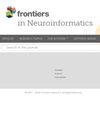SEEG4D:立体脑电图数据 4D 可视化工具
IF 2.5
4区 医学
Q2 MATHEMATICAL & COMPUTATIONAL BIOLOGY
引用次数: 0
摘要
癫痫是一种普遍而严重的神经系统疾病,影响着全球数百万人。立体脑电图(sEEG)空间分辨率高,能直观显示癫痫发作区,因此被用于耐药性癫痫患者的手术切除规划。为了准确定位癫痫发作病灶,脑电图研究结合了植入前磁共振成像、植入后计算机断层扫描以观察电极,以及时间记录的脑电图电生理数据。目前有很多工具可以帮助合并多模态空间信息,但很少有工具可以对电活动进行综合时空分析。在当前的工作中,我们介绍了 SEEG4D,这是一种自动工具,可将空间和时间数据合并成一个完整的四维虚拟现实(VR)对象,该对象具有时间电生理学,可同时查看解剖和癫痫发作活动,以进行癫痫定位和手术前规划。我们开发了一种自动化、容器化的管道来分割组织和电极触点。触点与电活动对齐,然后根据相对功率进行动画处理。SEEG4D 生成的模型可载入 VR 平台,供手术团队查看和规划。自动触点分割位置与训练有素的评定者相差不超过 1 毫米,生成的模型可显示信号沿电极传播的情况。重要的是,在 VR 空间中通过我们的模型传递的时空信息有可能增强 sEEG 手术前规划。本文章由计算机程序翻译,如有差异,请以英文原文为准。
SEEG4D: a tool for 4D visualization of stereoelectroencephalography data
Epilepsy is a prevalent and serious neurological condition which impacts millions of people worldwide. Stereoelectroencephalography (sEEG) is used in cases of drug resistant epilepsy to aid in surgical resection planning due to its high spatial resolution and ability to visualize seizure onset zones. For accurate localization of the seizure focus, sEEG studies combine pre-implantation magnetic resonance imaging, post-implant computed tomography to visualize electrodes, and temporally recorded sEEG electrophysiological data. Many tools exist to assist in merging multimodal spatial information; however, few allow for an integrated spatiotemporal view of the electrical activity. In the current work, we present SEEG4D, an automated tool to merge spatial and temporal data into a complete, four-dimensional virtual reality (VR) object with temporal electrophysiology that enables the simultaneous viewing of anatomy and seizure activity for seizure localization and presurgical planning. We developed an automated, containerized pipeline to segment tissues and electrode contacts. Contacts are aligned with electrical activity and then animated based on relative power. SEEG4D generates models which can be loaded into VR platforms for viewing and planning with the surgical team. Automated contact segmentation locations are within 1 mm of trained raters and models generated show signal propagation along electrodes. Critically, spatial–temporal information communicated through our models in a VR space have potential to enhance sEEG pre-surgical planning.
求助全文
通过发布文献求助,成功后即可免费获取论文全文。
去求助
来源期刊

Frontiers in Neuroinformatics
MATHEMATICAL & COMPUTATIONAL BIOLOGY-NEUROSCIENCES
CiteScore
4.80
自引率
5.70%
发文量
132
审稿时长
14 weeks
期刊介绍:
Frontiers in Neuroinformatics publishes rigorously peer-reviewed research on the development and implementation of numerical/computational models and analytical tools used to share, integrate and analyze experimental data and advance theories of the nervous system functions. Specialty Chief Editors Jan G. Bjaalie at the University of Oslo and Sean L. Hill at the École Polytechnique Fédérale de Lausanne are supported by an outstanding Editorial Board of international experts. This multidisciplinary open-access journal is at the forefront of disseminating and communicating scientific knowledge and impactful discoveries to researchers, academics and the public worldwide.
Neuroscience is being propelled into the information age as the volume of information explodes, demanding organization and synthesis. Novel synthesis approaches are opening up a new dimension for the exploration of the components of brain elements and systems and the vast number of variables that underlie their functions. Neural data is highly heterogeneous with complex inter-relations across multiple levels, driving the need for innovative organizing and synthesizing approaches from genes to cognition, and covering a range of species and disease states.
Frontiers in Neuroinformatics therefore welcomes submissions on existing neuroscience databases, development of data and knowledge bases for all levels of neuroscience, applications and technologies that can facilitate data sharing (interoperability, formats, terminologies, and ontologies), and novel tools for data acquisition, analyses, visualization, and dissemination of nervous system data. Our journal welcomes submissions on new tools (software and hardware) that support brain modeling, and the merging of neuroscience databases with brain models used for simulation and visualization.
 求助内容:
求助内容: 应助结果提醒方式:
应助结果提醒方式:


